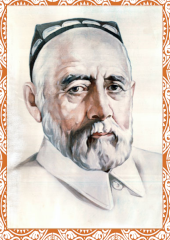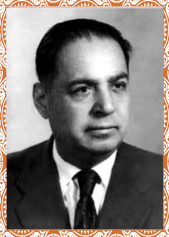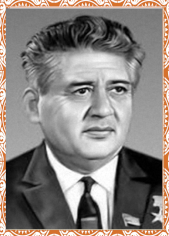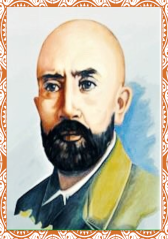Source: https://president.tj/tajikistan/proclamation_of_state_independence
In 1991, the balance of geopolitical and geostrategic interests of world powers changed following the collapse of the Soviet Union. A qualitatively new political era began in the history of mankind, a new period of influence of global and regional powers in parts of the world, primarily in the territory of the former Soviet Union and Eastern Europe.
Due to the termination or weakening of socio-political, economic, trade, transport and other ties between the countries of the post-Soviet space, as well as a new clash of interests of regional and world power-hungry forces, the newly independent Tajikistan was engulfed in a deep political, economic, social and cultural crisis.
The state independence of Tajikistan also fell on this difficult historical period.
In the last days of the domination of the Soviet state, where national and political conflicts were unleashed throughout its territory, the second Session of the Supreme Council of the Tajik Soviet Socialist Republic (twelfth convocation) on August 24, 1990 adopted the Declaration of State Independence of the Tajik Soviet Socialist Republic and opened a new historical stage in the fate of Tajikistan.
The Declaration provided for the place of Tajikistan within the framework of the new Soviet Union and it is believed that “the free and equal union of the Soviet peoples within the renewed Union of Soviet Socialist Republics guarantees their all-round development”. In accordance with it, the Republic of Tajikistan could independently resolve all political, economic, social and cultural issues on its territory, with the exception of powers voluntarily assigned to the Union of Soviet Socialist Republics.
The Declaration obligated the Republic of Tajikistan to respect and recognize the inviolability of the Union of Soviet Socialist Republics and union republics. This Declaration, with all its merits and significance, did not yet express the meaning of complete state independence, because in its individual articles points were emphasized that demanded dependence from other republics.
Within a year after the adoption of the Declaration, Tajikistan and the former Soviet republics, taking into account the rapidly changing reality and unexpected large-scale events, returned to the content and essence of their independence and resolutely tried to gain absolute independence.
The Republic of Tajikistan, also in the course of these movements for independence, realizing the need to amend and supplement the Declaration of August 24, 1990 at the extraordinary session of the Supreme Council of the Republic of Tajikistan (twelfth convocation) on September 9, 1991, expressed its opinion as follows: “Taking into account the revolutionary transformations in the Union of Soviet Socialist Republics, respecting the efforts of its constituent sovereign republics to restore mutual relations, in accordance with the Declaration of Independence of the Soviet Socialist Republic of Tajikistan, adopted on August 24, 1990, the Supreme Council proclaims the state independence of the Republic of Tajikistan”.
This statement envisaged two important articles that clearly show the determination of Tajikistan on the path to the country’s full independence: first, the efforts of sovereign republics to restore mutual relations; secondly, the refinement of the concept of “independence” by the term “state”, which had an international meaning and essence. Namely, based on this position, Tajikistan was presented in this statement as a subject of international law.
Unfortunately, the practical process of changing the political system of society, the state structure, the collapse of the branches of power, structural reforms in the executive branch on the basis of the norms and laws of a democratic society, the beginning of which was announced in the Declaration, failed in the face of political tension, civil war, intervention and self-interest internal and external adventurous forces.
In 1992, radical extremist groups in Tajikistan assumed the form of a power-hungry force, weakened the position of democratic forces and started an open struggle, taking advantage of the moment and abusing the possibilities of democratic and liberation processes.
Unaware of political games and the interests of internal and external forces, the people were divided into two opposing sides. Huge rallies were organized in two adjacent squares in the center of Dushanbe, one of which was called “Shahidon” and the other “Ozodi”.
The demands and claims of protesters of the two squares were completely opposite. In such a circumstance, the political situation of the capital and the country as a whole became extremely complicated.
Mutual insults and threats of the protesters escalated to such an extent that they stopped hearing each other.
One of the main reasons for the tragic events of that time was the drawing into the arena of political struggle and the distribution of positions to ordinary people who were not fully aware of the full depth of these political games and dangerous lust for power.
Radical extremist groups have been preparing for many years to come to political power at the direction and order of their foreign masters; it was obvious from their actions and words that they are not afraid of any consequences of their targeted struggle.
Thus, the leadership of the political struggle of insufficiently formed democratic forces of the country lacking political experience soon passed into the hands of extremist groups. They enticed the people with their skillful speeches, noticeably narrowing its horizons.
In Dushanbe, anti-Government forces created an organization called the “Headquarters for the Salvation of the Motherland”, which, in fact, was an apparatus for interrogating and torturing people who opposed their views.
In April 1992, radical opposition groups took hostage employees of the President’s Office, the Government and the Supreme Council of the country, including 15 members of the Supreme Council and two Deputy Chairmen of the Council of Ministers of the country. The Head of the Presidential Guard, General Bahrom Rahmonov, joined the government’s opposition bloc. Tajik President Rahmon Nabiev organized a new National Guard at the expense of those gathered in “Ozodi” Square.
Thus, the representatives of both squares were first armed with clubs and shovels, then with firearms. Between the two squares, more precisely, at the intersection of Rudaki Avenue and Communist Street (now Shirinsho Shotemur Street), not far from the “Tajikistan” Hotel, even a cannon– a heavy artillery gun was placed facing towards “Ozodi” Square.
On May 5, 1992, a shooting took place in front of the building of the Supreme Council, as a result of which Murodullo Sheralizoda, editor-in-chief of the parliamentary publication “Sadoi Mardum”, was killed. On the same day, several innocent young people were killed in the village of “Oli Sovet” in the Leninsky district (now Rudaki) as a result of the first shooting of two opposing armed groups. On this day, the political struggle grew into armed resistance, a bloody and shameful civil war began.
In order to avoid a further escalation of open hostilities in Dushanbe and to prevent much bloodshed, the people gathered in “Ozodi” Square dispersed, leaving the capital with weapons distributed among them.
President Rahmon Nabiev lost control of state administration and took refuge from an open threat to his life, first in the building of the Ministry of National Security, and then in the headquarters of the 201st division of the Russian Federation.
In May 1992, the Government of National Reconciliation was created, which included 9 leaders of the United Tajik Opposition. However, this measure had no effect on the political situation in the country.
At the end of May, the opposition tried to create a State Council and take over the government of the country, but this plan was not destined to be realized.
Due to the inability of the management of the central authorities, which were under the influence of religious extremists and radical opposition, the former Kulob region fell into the most severe economic blockade.
People faced the danger of starvation. Due to the shortage of flour and wheat, part of the population of cities and districts of the Kulob region was forced to consume even bran and oilcake.
This situation led to an unprecedented outbreak of severe infectious diseases (heliotropic hepatitis). Many people died from such diseases in the Farkhor and Vose districts.
 Login
Login Sitemap
Sitemap Contacts
Contacts



 Адиб, олим ва асосгузори адабиёти муосири тоҷик. Аввалин Президенти Академияи илмҳои Ҷумҳурии Тоҷикистон. Муаллифи асарҳои «Таърихи амирони манғитияи Бухоро», «Таърихи инқилоби фикрӣ дар Бухоро», «Намунаи адабиёти тоҷик», «Дохунда», «Ғуломон», «Ёддоштҳо» ва дигар асарҳо, ки ба 29 забони хориҷӣ нашр шудаанд.
Адиб, олим ва асосгузори адабиёти муосири тоҷик. Аввалин Президенти Академияи илмҳои Ҷумҳурии Тоҷикистон. Муаллифи асарҳои «Таърихи амирони манғитияи Бухоро», «Таърихи инқилоби фикрӣ дар Бухоро», «Намунаи адабиёти тоҷик», «Дохунда», «Ғуломон», «Ёддоштҳо» ва дигар асарҳо, ки ба 29 забони хориҷӣ нашр шудаанд. Олим, академики Академияи Илмҳои ИҶШС, арбоби ҳизбӣ ва давлатӣ, муаллифи китоби оламшумули «Тоҷикон» ва зиёда аз 300 асару мақолаҳо.
Олим, академики Академияи Илмҳои ИҶШС, арбоби ҳизбӣ ва давлатӣ, муаллифи китоби оламшумули «Тоҷикон» ва зиёда аз 300 асару мақолаҳо. Шоири халқӣ, раиси Иттифоқи нависандагони Тоҷикистон, Қаҳрамони меҳнати сотсиалистӣ, Раиси Кумитаи якдилии халқҳои Осиё ва Африқо. Барои достонҳои «Қиссаи Ҳиндустон»(1948), «Ҳасани аробакаш», «Чароғи абадӣ», «Садои Осиё»,(1960) «Ҷони ширин» (1963) бо ҷоизаҳои давлатии ИҶШС, ҶШС Тоҷикистон ва байналмилалии ба номи Ҷ. Неҳру (1967) сарфароз шуда буд.
Шоири халқӣ, раиси Иттифоқи нависандагони Тоҷикистон, Қаҳрамони меҳнати сотсиалистӣ, Раиси Кумитаи якдилии халқҳои Осиё ва Африқо. Барои достонҳои «Қиссаи Ҳиндустон»(1948), «Ҳасани аробакаш», «Чароғи абадӣ», «Садои Осиё»,(1960) «Ҷони ширин» (1963) бо ҷоизаҳои давлатии ИҶШС, ҶШС Тоҷикистон ва байналмилалии ба номи Ҷ. Неҳру (1967) сарфароз шуда буд. Президенти Ҷумҳурии Тоҷикистон. 19 ноябри соли 1992 дар иҷлосияи XVI Шўрои Олии Ҷумҳурии Тоҷикистон раиси Шўрои Олии Ҷумҳурии Тоҷикистон, 6 ноябри соли 1994 бори аввал, солҳои 1999, 2006 ва 2013 Президенти Ҷумҳурии Тоҷикистон интихоб гардидаст.
Президенти Ҷумҳурии Тоҷикистон. 19 ноябри соли 1992 дар иҷлосияи XVI Шўрои Олии Ҷумҳурии Тоҷикистон раиси Шўрои Олии Ҷумҳурии Тоҷикистон, 6 ноябри соли 1994 бори аввал, солҳои 1999, 2006 ва 2013 Президенти Ҷумҳурии Тоҷикистон интихоб гардидаст. Нусратулло Махсум (Лутфуллоев) ходими давлатӣ ва ҳизбӣ. Солҳои 1924-1926 раиси Кумитаи инқилобии ҶМШС Тоҷикистон, солҳои 1926-1933 раиси Кумитаи Иҷроияи Марказии ҶШС Тоҷикистон.
Нусратулло Махсум (Лутфуллоев) ходими давлатӣ ва ҳизбӣ. Солҳои 1924-1926 раиси Кумитаи инқилобии ҶМШС Тоҷикистон, солҳои 1926-1933 раиси Кумитаи Иҷроияи Марказии ҶШС Тоҷикистон. Ходими давлатӣ ва ҳизбӣ. Солҳои 1929-1931 котиби Ҳизби коммунистии ҶШС Тоҷикистон, солҳои 1933-1937 Раиси Кумитаи Иҷроияи Марказии ҶШС Тоҷикистон.
Ходими давлатӣ ва ҳизбӣ. Солҳои 1929-1931 котиби Ҳизби коммунистии ҶШС Тоҷикистон, солҳои 1933-1937 Раиси Кумитаи Иҷроияи Марказии ҶШС Тоҷикистон.


